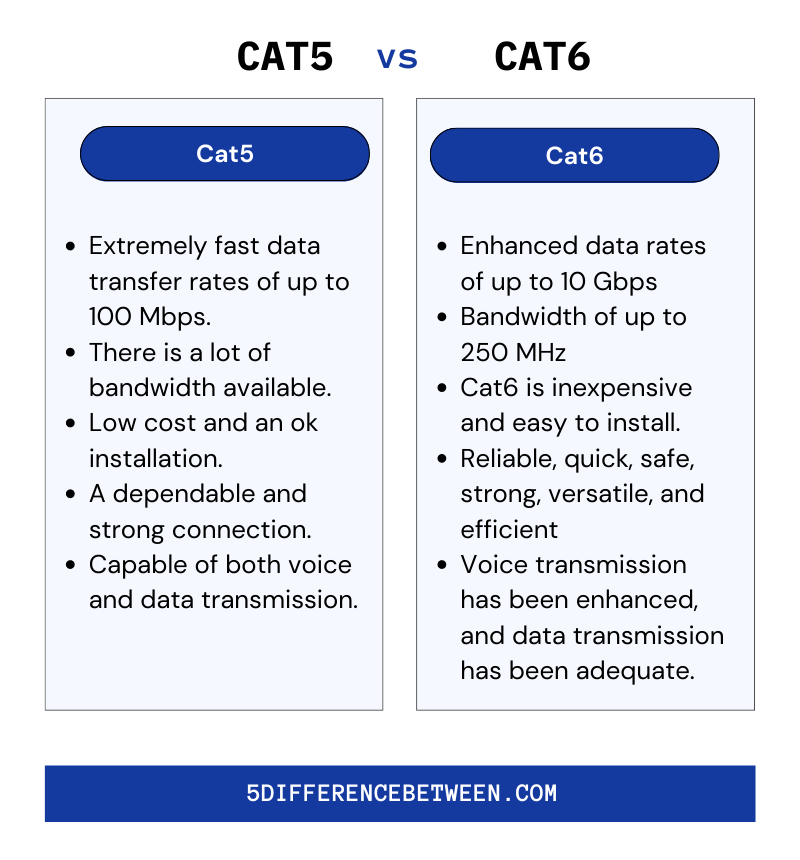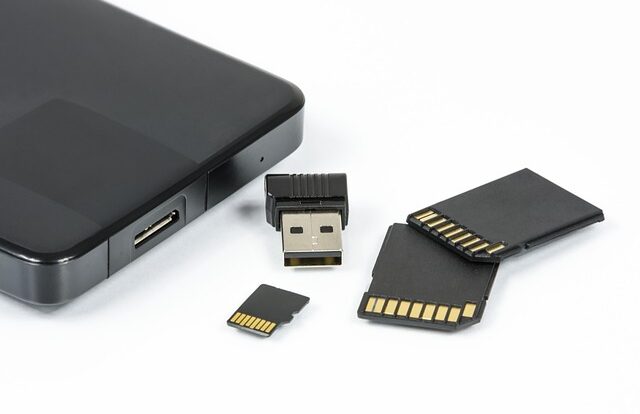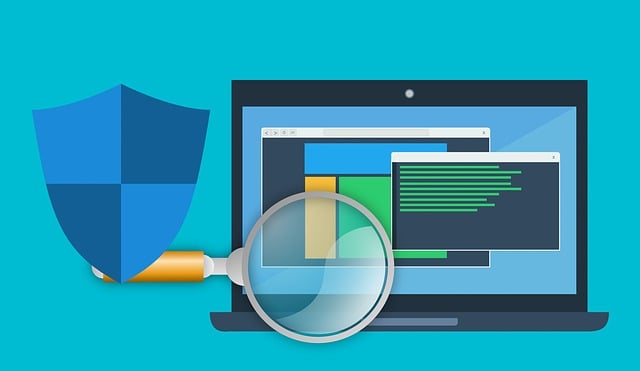Cat5 and Cat6 Ethernet cables are the most common Ethernet cables used in computer networks. Both are used to connect computers, printers, and other LAN devices to one another as well as to the internet. Both cables are constructed from numerous small insulated wires that have been twisted together. While they both use the same type of connector, the difference between Cat5 and Cat6 are significant.
What is Cat5?
Cat5 is an acronym for category 5 cable, which is an Ethernet cable used to connect computers. It links computers, printers, servers, and other networking devices such as routers and switches. The cables are made up of four twisted pairs of copper wire, two of which are insulated. Twisted pairs reduce crosstalk and interference while speeding up data transfer. These cables are commonly used in Ethernet networks, but they can also be used in Token Ring, ISDN, and ATM networking.
Also Read > Difference Between Input and Output Devices
Also these cables come in two varieties: shielded and unshielded. The most common type of cable is unshielded, with an outer jacket made of PVC (plastic) or PE (polyethylene). Shielded cables have a metal foil or metal braid layer wrapped around the twisted pairs of wire to provide additional protection against electromagnetic interference. The cables can transmit data at up to 100 megabits per second (Mbps), but they are usually used at slower rates.
What is Cat6?
Cat6 networking cable is a type of Ethernet cable. It is a twisted pair of cables that has been designed to reduce noise interference and crosstalk while providing more bandwidth than previous networking cable standards. It is the most widely used Ethernet cable in today’s homes and businesses. The Cat6 cable is designed for use in Ethernet networks. It is a twisted pair of cables that has been designed to reduce noise interference and crosstalk while providing more bandwidth than previous networking cable standards. It is the most widely used Ethernet cable in today’s homes and businesses.
Also the cable is composed of four pairs of wires twisted in a helical pattern. This twisting helps to reduce interference and crosstalk. A metallic sheath is typically used to shield the cable, reducing noise interference and crosstalk. These cables are available in a variety of lengths and can be used both indoors and outdoors. They can deliver up to 10 GBPS of bandwidth, making them ideal for use in high-bandwidth applications like streaming video or gaming. They are also backward compatible with previous Ethernet standards, allowing them to function on existing networks. They come in a variety of colors and sizes, and they can be used both indoors and outdoors.
Cat5 Vs Cat6

Overall, both the cables have a broader range of applications, making it the superior choice for the majority of applications. The difference between Cat5 and Cat6 is that Cat6 cable are thicker than Cat5 cable, so they are more resistant to interference and crosstalk. Because Cat6 has a higher bandwidth than Cat5, it allows for more data to be transferred over the same cable.







One Comment to “5 Difference Between Cat5 and Cat6”